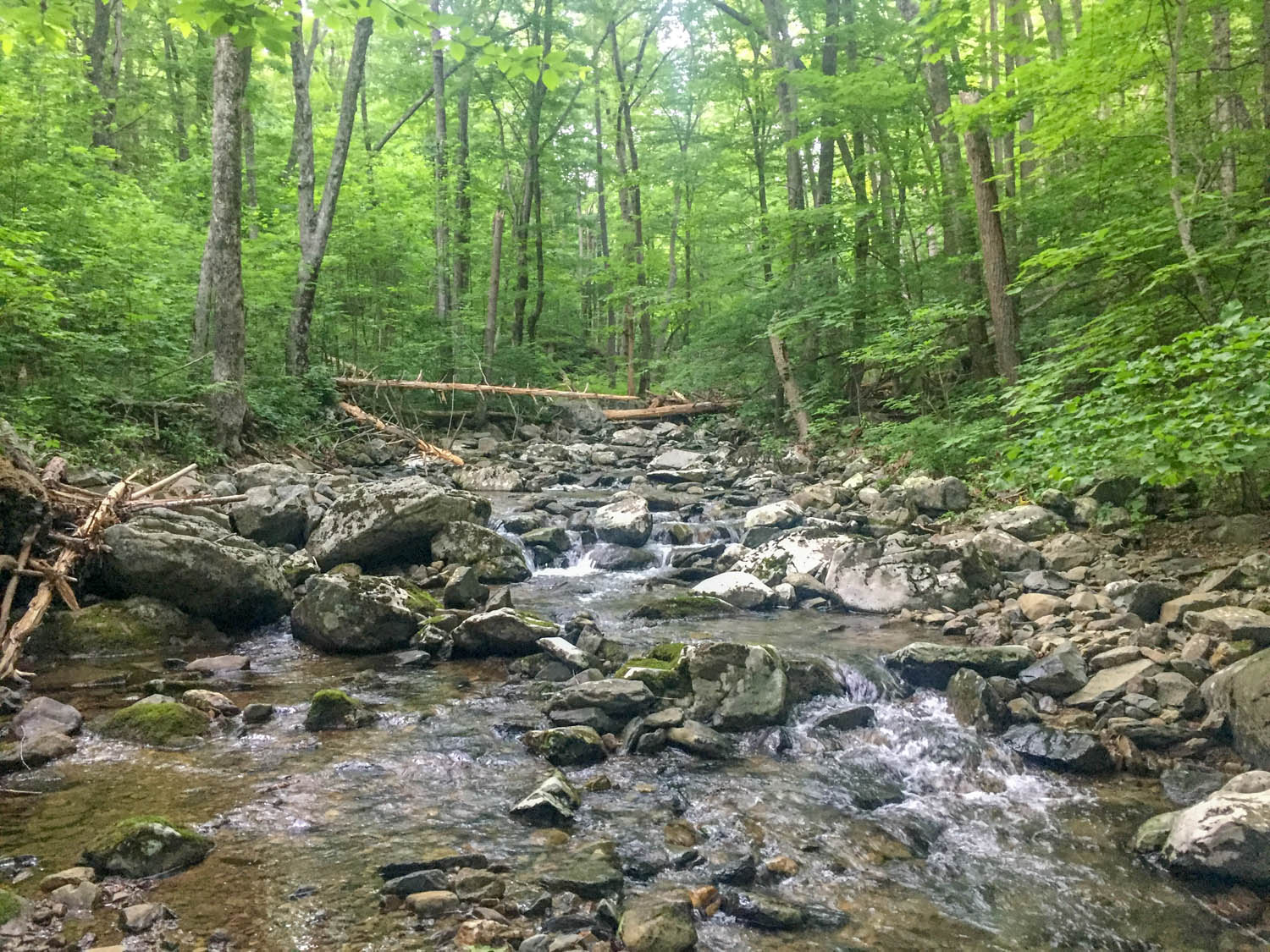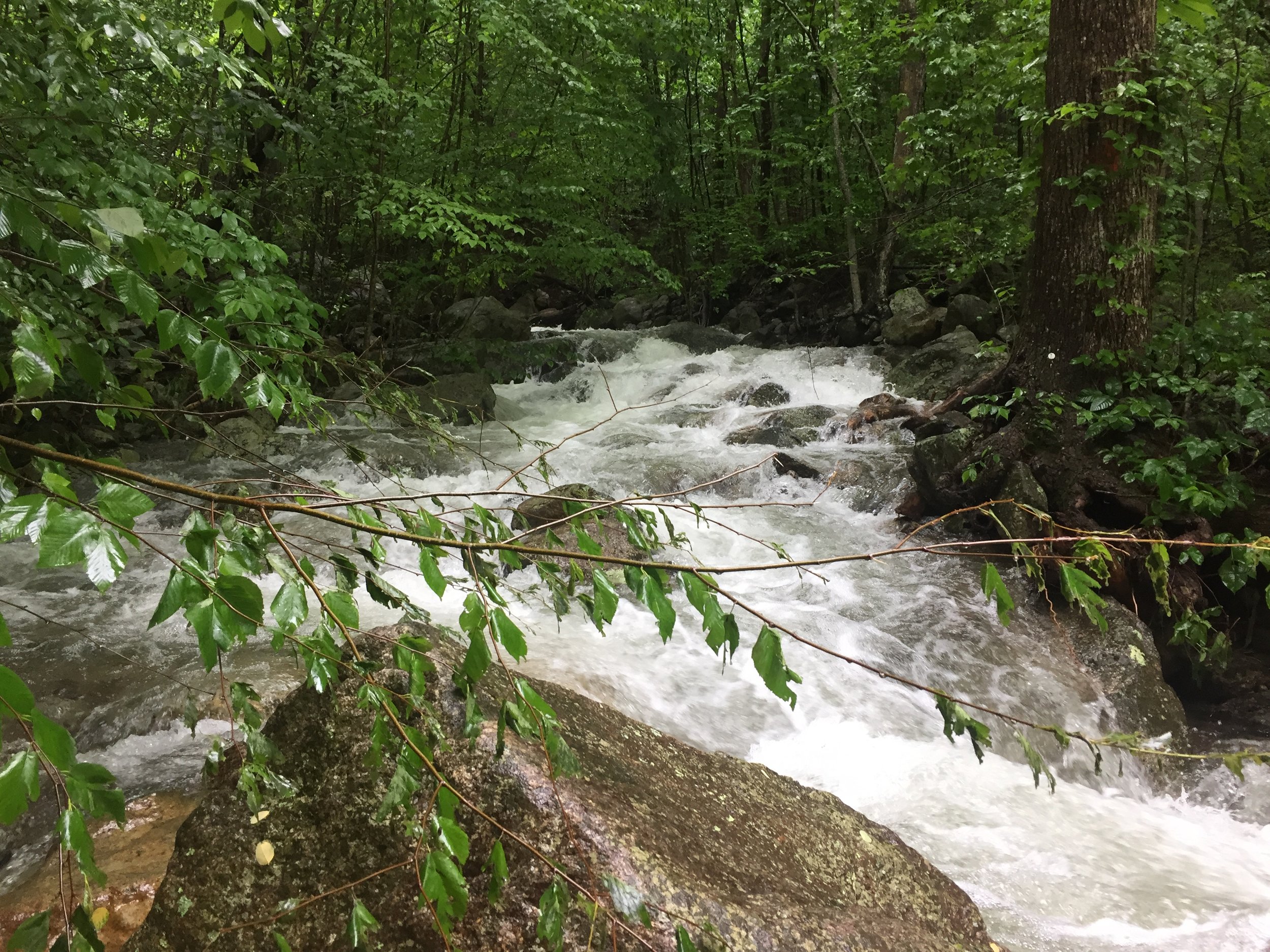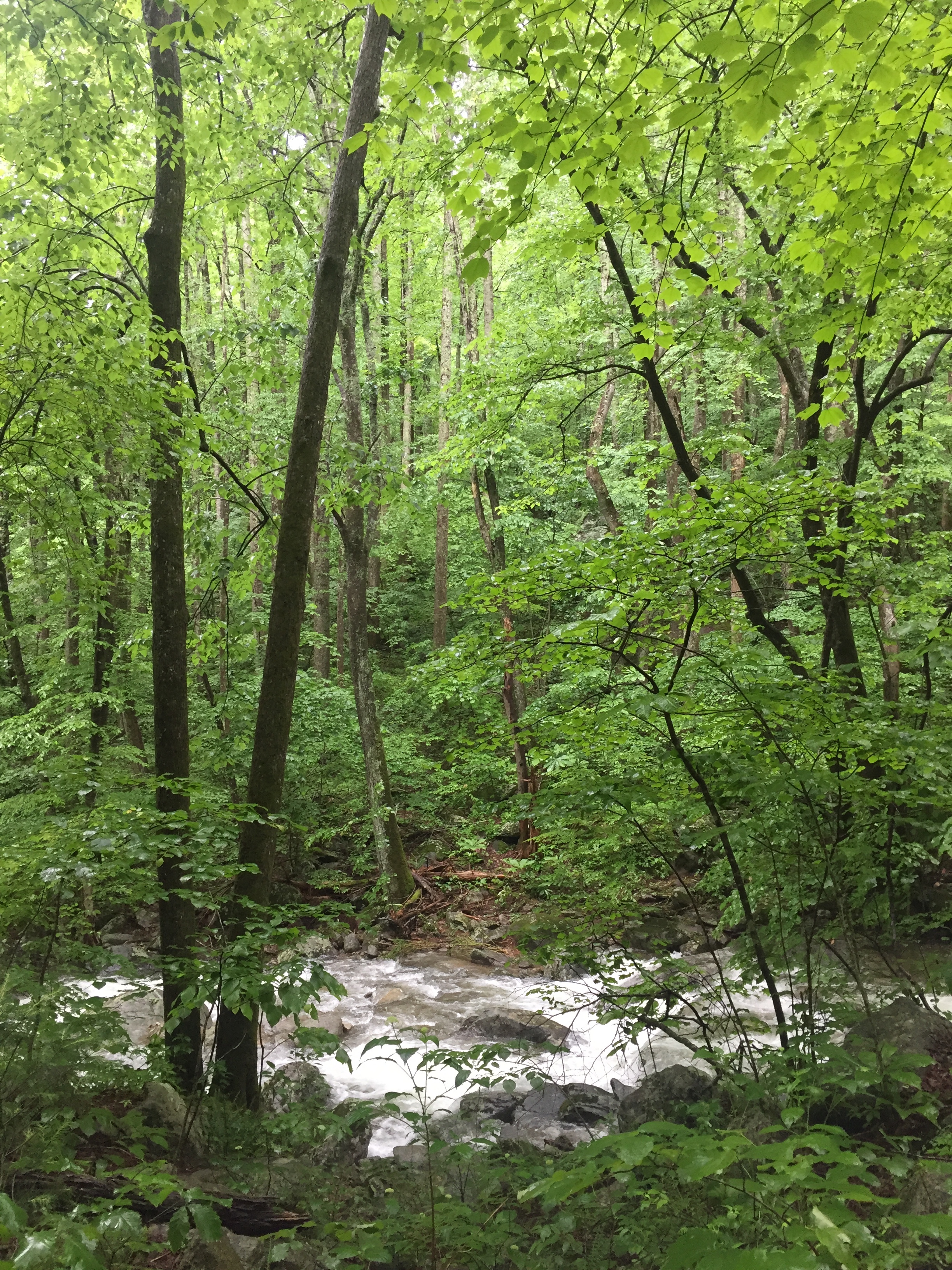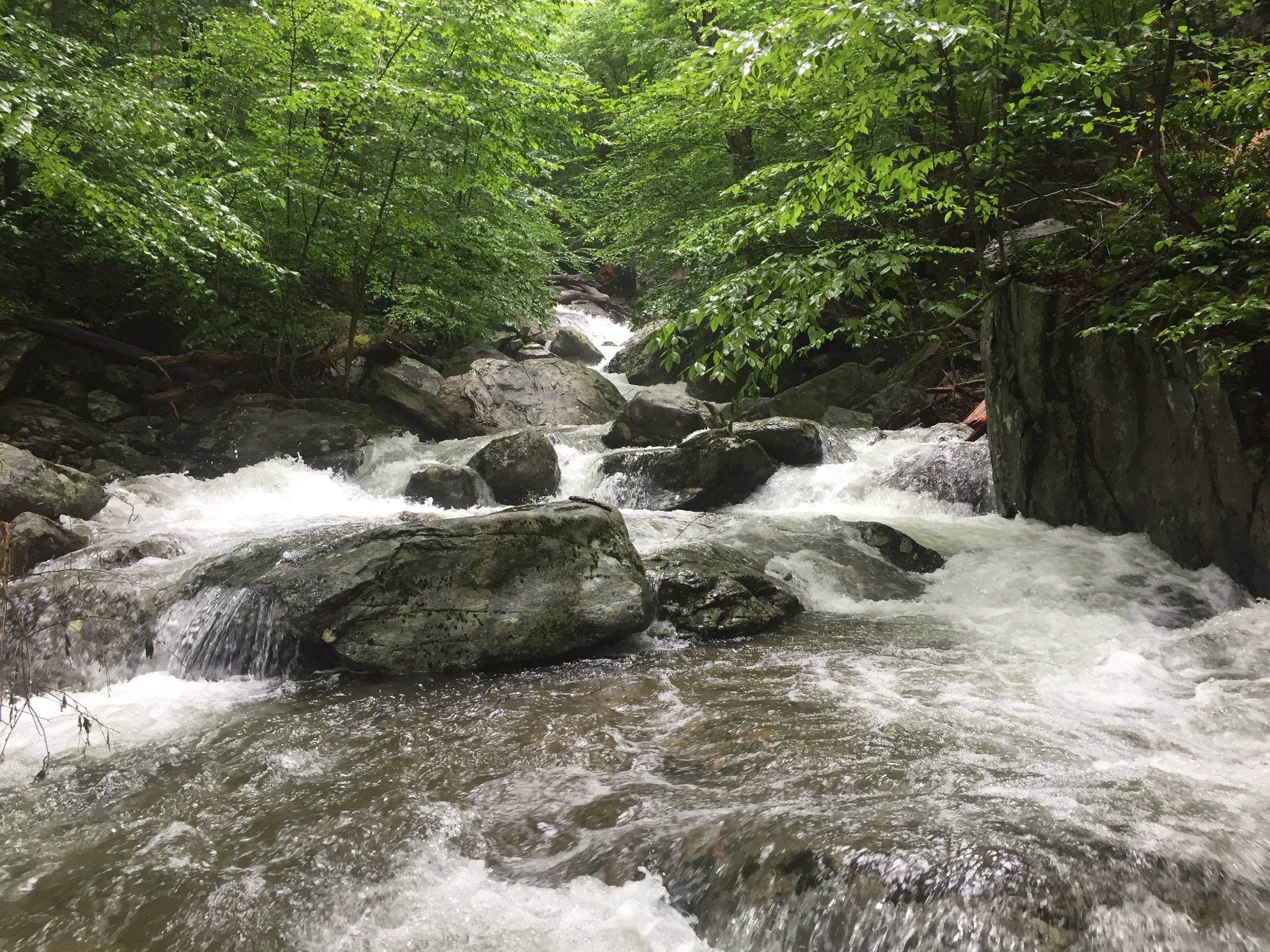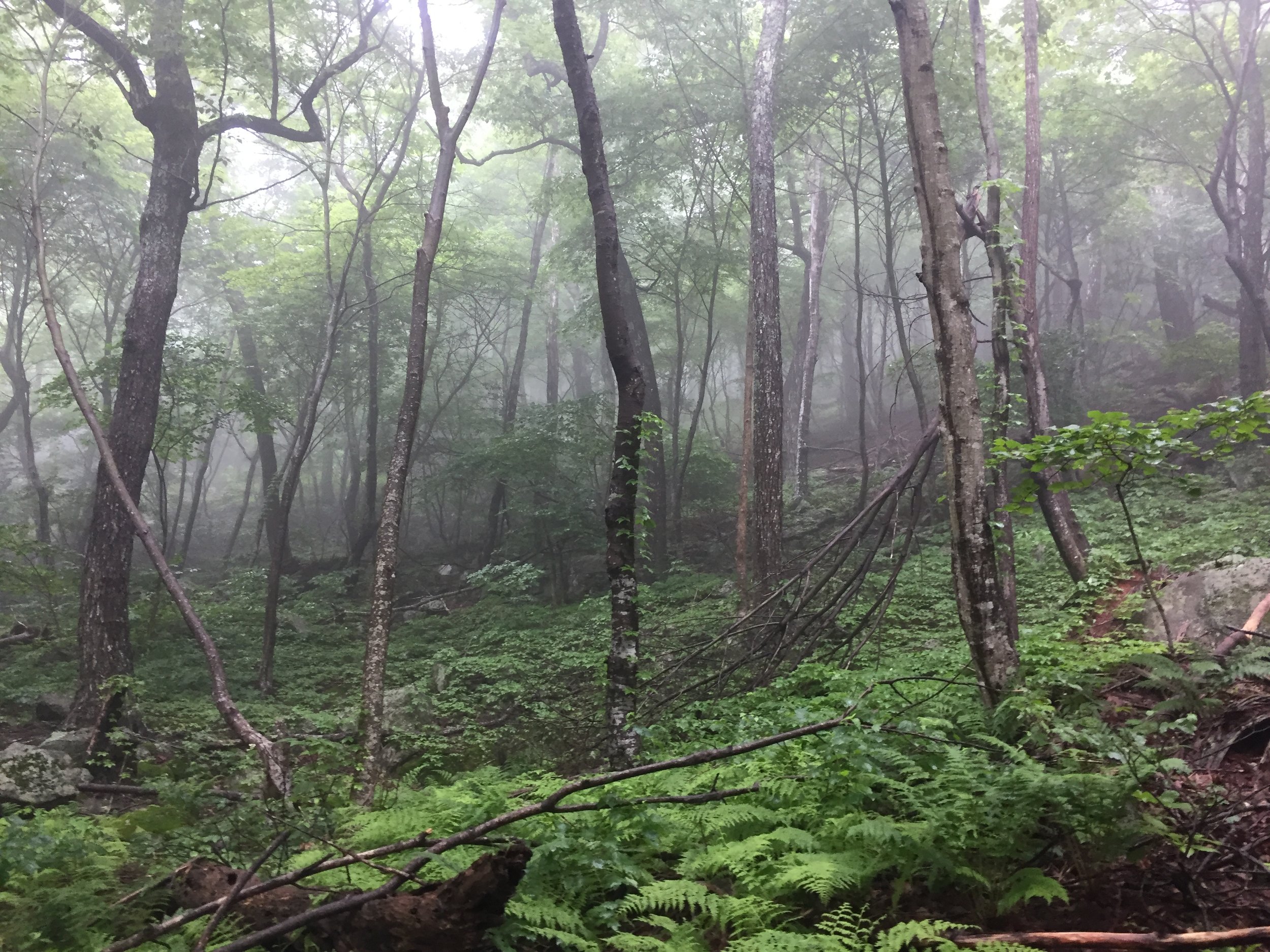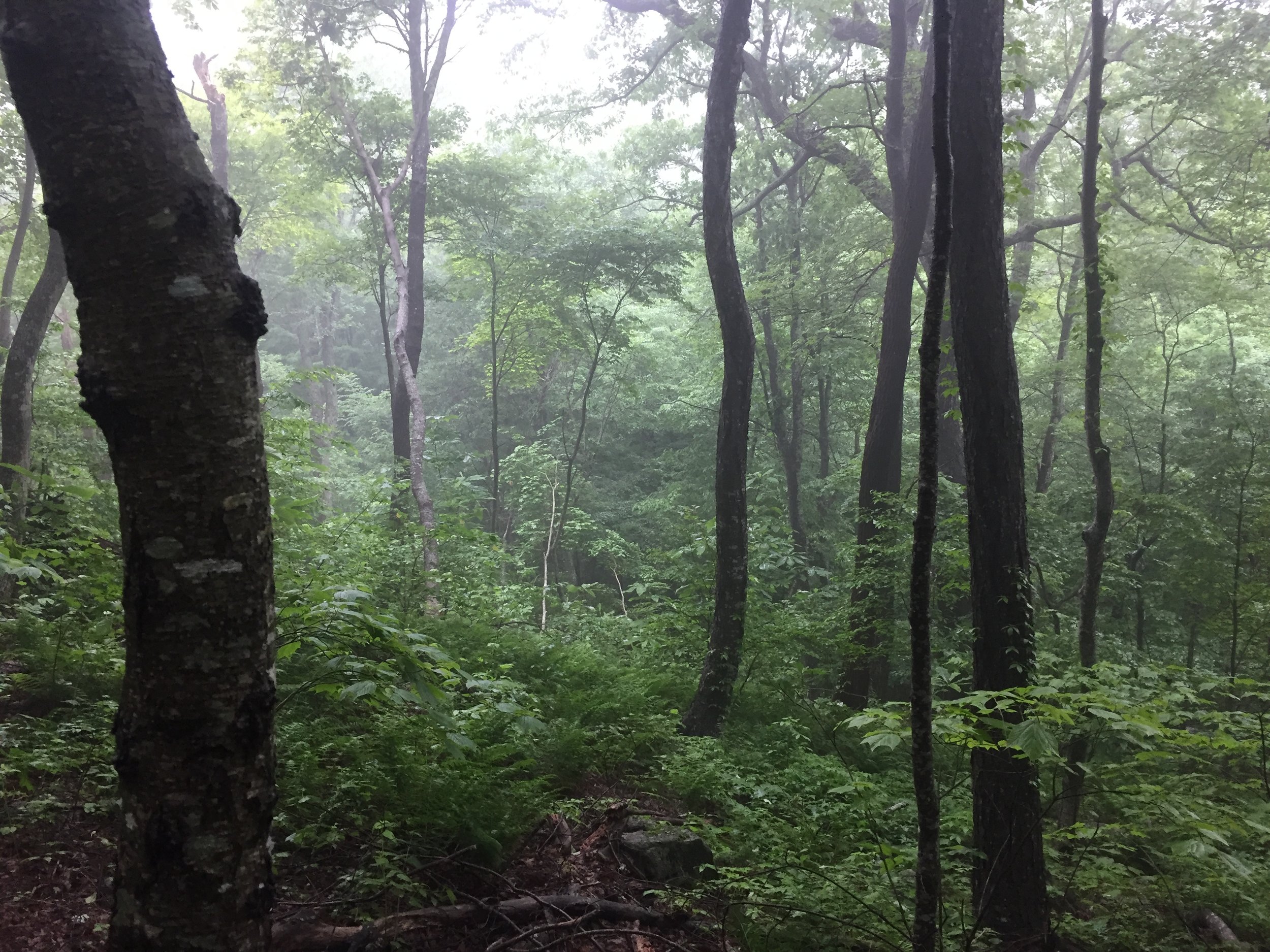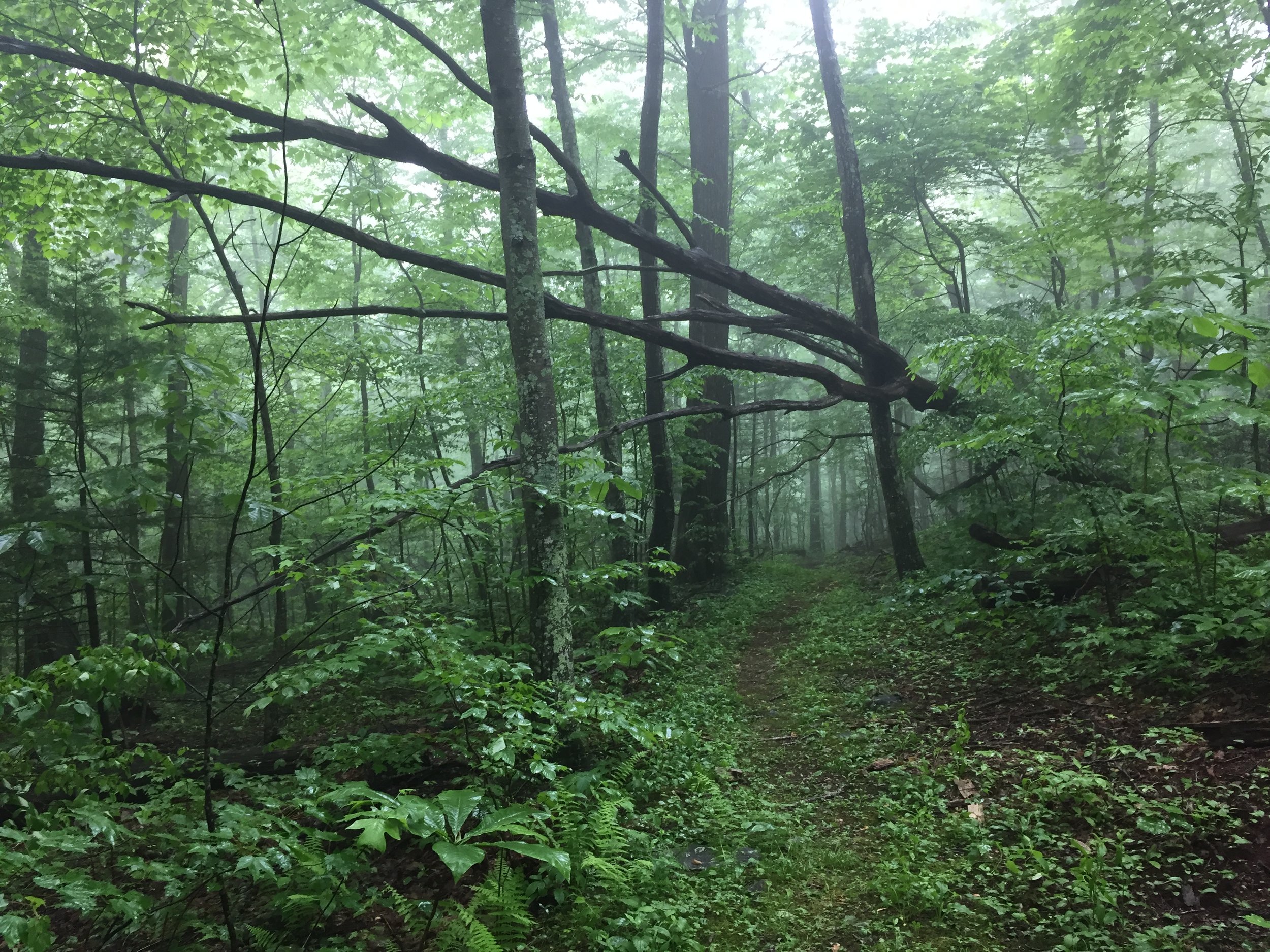I always feel sneaky when requesting a backcountry permit in Shenandoah National Park. Maybe it is because it feels like such a valuable thing given away freely, a free pass into a backcountry wonderland full of waterfalls and wild trout. Invaluable experiences awaiting.
As I often do, I picked a location with no set plan other than exploring the water and spending the night. On this trip, I chose a stream I knew nothing about other than the fact that it had at least one waterfall, which seams to be a prerequisite for most streams in the park. Waterfalls mean steep terrain and steep terrain means pools in between waterfalls. Brook trout are known to frequent these pools.
The plan was to approach the trail from the top, where it intersects Skyline Drive and fish my way down with all my gear, set up a hammock to sleep, and then hike and fish my way out the same route in the morning. It happened to be ‘free entry’ day into the park and the trail head swarmed with people in almost intimidating numbers. From experience I guessed that most these people were not fishermen and would likely not make it much more than a mile down the trail. This assumption proved correct and most folks stopped hiking at the first flagship waterfall. I plucked a few trout from pools along the first mile of trail before hurrying further downstream away from the crowds.
Minimal gear and high calorie to weight foods made for a light pack that was surprisingly comfortable to hike and fish with, remaining nimble enough to rock hop along boulders and scramble under fallen logs. The camping gear I carried on my back. I had loaded a handful of dry flies, nymphs, and streamers in a beautiful leather and sheep wool fly wallet handmade by my cousin that I wore in a fanny pack around my waist along with my camera and other miscellaneous fly gear. This allowed quick access to switch out flies and re-apply floatant with minimal adjustment.
In the first pool I came to, I picked up three nice trout before switching out my ant fly to a more visible yellow sally. From then on, every pool I cast to yielded at least one strike. The sheer density of trout in the smallest of pools is astonishing, every fish immaculately colored and healthy.
I quickly lost count of trout landed and as the sun dipped behind the ridge, I began looking for a place to sleep. The terrain was steep, rocky, and heavily wooded; a nightmare for finding a spot to pitch a tent. Fortunately, I brought a hammock. I found a pair of trees far enough from the stream to honor the backcountry camping 100ft distance requirements, but still near enough to hear the endless churn of falling water. The sounds of the water were soothing, but more importantly they block out the sound of crackling twigs and rustling leaves in the night, enabling me to blissfully ignore the wild creatures sharing the forest. Just before dark, I finished my salami and cheese with crackers, filtered some water, and hung my food in a tree a good distance away. I had spotted a bear while driving to the trail head and the memory was stubbornly fresh in my mind. Even with the food hanged and the stream blaring and the hammock nestled around me, my nerves still kept me from peacefully drifting off to sleep. I foresaw this problem, for which I brought whiskey.
I am not a morning person, but when the sun pokes through the trees at 6am, there is little to do but roll out of bed. Down at the water, a few insects lazily rose from the stream slipping in an out of the morning beams broken by trees. I packed up camp and began rock hopping my way back upstream. Although insects were in the air, the trout hadn’t yet keyed in on the overhead feast. Even with no fish rising on their own accord, they kindly made an exception for my yellow sally. Just as the previous day, every pool of a relatively fishy look offered at least one rising trout. The highlight of the morning came back at the main waterfall attraction, fortunately before the days masses descended. As I hiked up the steep trail beside the falls, I noticed the distinctive outline of a seven inch trout in a small pool in the midst of the falls. The pool was no larger than a placemat and completely inaccessible from above or below. How the trout came to be in that pool is a mystery. Did it get swept over the falls or could it have grown from a fry in that tiny pool? Shenandoah National Park has a way of putting trout in the most stunning and unusual places and I hope to explore them all.

















